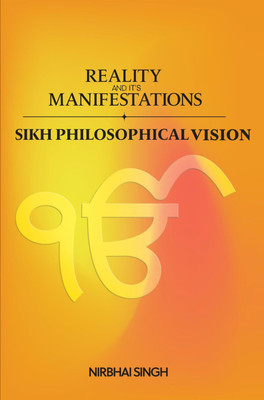REALITY And ITŌĆÖS Manifestations (Sikh Philosophical Vision)(Hardcover, Nirbhai Singh)
Quick Overview
Product Price Comparison
The present work deals with the central philosophical problem of the transcendent and the empirical dimensions of the reality. Earlier works on the Guru Granth were primarily exegetical explanations based on literal meanings and etymologies of the texts. The present work is a philosophical attempt to probe metaphysical and epistemological foundations of the Sikh worldview. It tries to reconcile the perennial philosophical issue of the transcendent and the immanent by encompassing both into the concrete mystical unity of the ikoamk┬╣r (<). The problem of reconciling the transcendent and the immanent in the prevalent Indic and Islamic traditions provided intellectual milieu. For this reason the third chapter has been exclusively devoted to both traditions. Simultaneous self-transcendence from the worldly entices with disinterested involvement in the mundane world is the sui generis contribution of the Sikh onto-theology. The ideal man of Sikhism is to be in the world and not of the world. This present work expounds an objective philosophical coeval interpretation of the sacred scriptures of the East and the West. It is primarily concerned with culling out the original revealed meanings of the sacred scriptures. After introductory chapter the second chapter on philosophical hermeneutics provides principles of interpretation of the religious texts for understanding the hidden meanings of the texts. The study is an independent metaphysical system of the Guru Canon that is based on the original text. Though in the emergence and development of the Sikh worldview, the Indic (Shramanic and Vedic) religions and Islam provided an intellectual environment, yet articulation of the Sikh metaphysics anchors on the personal singular mystic experiences of the contributors of the Sikh Canon. The Guru Granth was meticulously edited and canonized within the non-dual metaphysical framework of the m├ślma┬Ītra, the cardinal principle of the Sikh philosophy. In the medieval times the world and the life negations were prevalent. Sikhism rejects the mythical otherworld (heaven and hell) and restores reality of this-world and historical action. Societal involvement is a logical necessity of the Sikh philosophy. Hence, householderŌĆÖs lifestyle and struggle for justice and freedom are the central linchpins of Sikhism. Fourth and fifth chapters focus on Sikh metaphysics and sixth and seventh chapters concentrate on singular contribution of Sikh epistemology that is exclusively based on sabda-surata-yoga.


